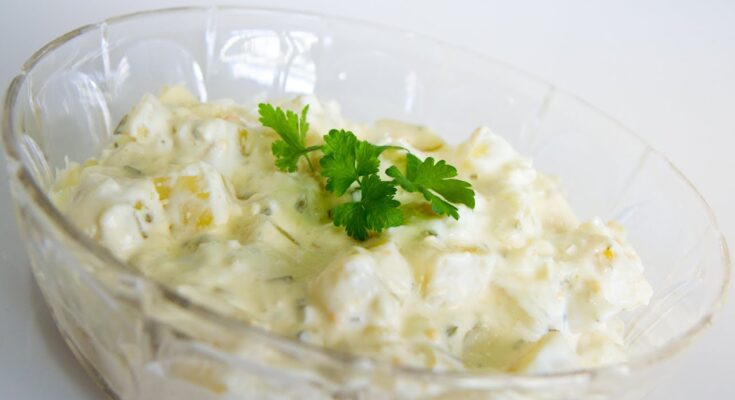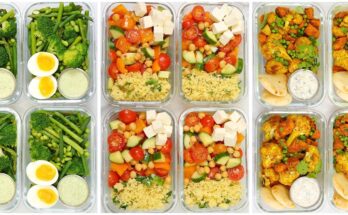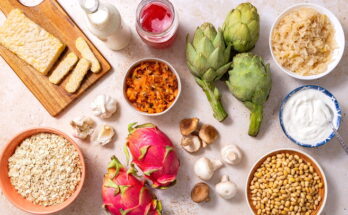Potato Salad Recipe: Potato salad is a beloved side dish that brings a comforting mix of flavors and textures to any table.
Whether you’re planning a summer BBQ, a picnic, or just need a simple side for a family dinner, potato salad is a timeless choice. It’s customizable, easy to make, and always a crowd-pleaser.
In this step-by-step guide, I’ll walk you through making the perfect potato salad from scratch, covering everything from selecting the right potatoes to adding your own unique twist.
Ingredients for Potato Salad
Before we dive into the method, let’s look at what you’ll need:
Core Ingredients:
- 6 medium-sized potatoes (Yukon Gold or Russet)
- 1 cup mayonnaise (or Greek yogurt for a lighter option)
- 1 tablespoon mustard (Dijon or yellow)
- 2 hard-boiled eggs (chopped)
- 1/2 cup celery (finely chopped)
- 1/4 cup red onion (finely diced)
- Salt and pepper to taste
- 1 tablespoon apple cider vinegar or lemon juice
Optional Ingredients for Customization:
- Pickles or relish (for tangy sweetness)
- Chopped fresh herbs (like dill or parsley)
- Crumbled bacon
- Cheese (sharp cheddar, feta)
Choosing the Right Potatoes
Not all potatoes are created equal when it comes to making potato salad. Here’s how to choose the best ones:
Best Types of Potatoes for Potato Salad
- Yukon Gold: Creamy and firm, Yukon Gold potatoes are perfect for holding their shape after cooking.
- Russet Potatoes: These are fluffier and break down more, which is great for a creamier salad but can get mushy if overcooked.
- Red Potatoes: With a waxy texture, red potatoes are another excellent option since they hold their shape well.
How to Prepare Potatoes for Cooking
Wash and peel the potatoes (or leave the skin on if you prefer a more rustic look). Cut them into bite-sized cubes, roughly the same size to ensure even cooking.
Step-by-Step Guide to Making Potato Salad
Step 1: Gather All Ingredients
Before you start, have all your ingredients prepared and ready. This makes the process quicker and smoother.
Step 2: Boil the Potatoes
Place the cubed potatoes into a large pot of cold, salted water. Bring to a boil, then reduce the heat to a simmer. Cook for 10-15 minutes, or until the potatoes are tender when pierced with a fork. Be careful not to overcook, as you want them firm enough to hold up in the salad. Drain and let cool.
Step 3: Prepare Other Ingredients
While the potatoes are boiling, chop the celery, onion, and hard-boiled eggs. If you’re adding bacon or herbs, get those ready too.
Step 4: Make the Dressing
In a separate bowl, whisk together the mayonnaise, mustard, vinegar or lemon juice, salt, and pepper. This dressing will coat the potatoes and bring everything together.
Step 5: Mix the Salad
Once the potatoes have cooled, combine them with the celery, onions, and eggs in a large bowl. Pour the dressing over the top and gently fold everything together. Be careful not to mash the potatoes while mixing.
Step 6: Chill and Serve
For best results, cover the salad and let it chill in the refrigerator for at least an hour before serving. This allows the flavors to meld together.
Tips for the Perfect Potato Salad
- Timing is Key: Don’t overcook your potatoes or they’ll fall apart in the salad. Test them frequently to make sure they’re just tender.
- Balance the Flavors: Taste your salad as you mix, and adjust salt, pepper, and acidity. A splash of vinegar or lemon juice can brighten up the flavors.
Variations of Potato Salad
Potato salad can take many forms. Here are some popular variations:
Creamy Potato Salad
This classic version uses a mayonnaise-based dressing for a rich, creamy texture.
German Potato Salad
This variation skips the mayo in favor of a tangy vinegar-based dressing, often served warm and paired with bacon.
Mustard-Based Potato Salad
For a bolder flavor, increase the mustard in the dressing and cut back on the mayo. This version has a zesty kick.
Mediterranean Potato Salad
Swap the mayonnaise for olive oil, and add ingredients like olives, feta cheese, and cucumbers for a fresh, vibrant twist.
Common Mistakes to Avoid
- Overcooking the Potatoes: This leads to a mushy salad. Keep an eye on them!
- Too Much Dressing: A little goes a long way. You can always add more, but it’s hard to take out.
- Not Chilling Properly: Potato salad is best served cold. Give it time to chill for maximum flavor.
Best Occasions to Serve Potato Salad
Potato salad is incredibly versatile. It shines as a side dish at BBQs, picnics, potlucks, or any casual gathering. It pairs perfectly with grilled meats, burgers, or sandwiches.
Health Benefits of Potato Salad
Potatoes are a great source of fiber, potassium, and Vitamin C. To make your potato salad healthier, you can use Greek yogurt instead of mayonnaise, and load it with fresh vegetables like cucumbers or peppers.
Storing and Reheating Potato Salad
How Long Does Potato Salad Last?
In the fridge, potato salad lasts about 3-5 days. Be sure to store it in an airtight container.
Reheating vs. Serving Cold
Potato salad is traditionally served cold, but if you prefer, you can serve it warm. Just be cautious with mayonnaise-based dressings when reheating to avoid separation.
Pairing Potato Salad with Other Dishes
Potato salad is a wonderful side for grilled chicken, ribs, hot dogs, or fish. For a complete meal, pair it with a light, leafy salad.
Potato Salad for Dietary Preferences
Vegan Potato Salad
To make it vegan, swap the mayonnaise with a vegan alternative or use olive oil-based dressing.
Gluten-Free Potato Salad
Naturally, potato salad is gluten-free. Just be sure to check all ingredients, especially store-bought dressings.
Making Potato Salad Ahead of Time
Potato salad is an excellent make-ahead dish. You can prepare it the night before and store it in the fridge, giving the flavors time to develop.
Creative Additions to Elevate Your Potato Salad
Consider adding bacon, cheese, or even roasted red peppers for extra flavor. Fresh herbs like parsley, dill, or chives can also add a refreshing touch.
FAQs about Potato Salad Recipe
1. What are the key ingredients for potato salad?
Traditional potato salad typically includes boiled potatoes, mayonnaise, mustard, onions, and celery. You can also add ingredients like eggs, pickles, or bacon for extra flavor.
2. What type of potatoes should I use?
Waxy potatoes like red or Yukon Gold are the best for potato salad because they hold their shape well and have a creamy texture.
3. How can I make potato salad healthier?
You can substitute mayonnaise with Greek yogurt or a light vinaigrette. Adding more vegetables like cucumbers or bell peppers can also boost nutrition.
4. Can I make potato salad ahead of time?
Yes! Potato salad can be made 1–2 days ahead. Just be sure to store it in an airtight container in the refrigerator to maintain freshness.
5. How long can potato salad last in the fridge?
Potato salad can last in the refrigerator for up to 3–4 days if stored properly. Be sure to keep it chilled to avoid spoilage.
Conclusion
In this potato salad recipe, we’ve covered how to make a classic, creamy dish perfect for any occasion. From boiling the potatoes just right to mixing the ingredients for that delicious balance of flavors, this recipe is easy to follow and sure to impress.
Now that you’ve mastered the basics, don’t hesitate to experiment! Try adding your favorite herbs, spices, or even a twist like bacon or avocado to customize your potato salad. The beauty of this dish is its versatility, so make it your own and enjoy the delicious results!
References
To provide further reading and validation of the information shared in this Potato Salad Recipe with Post Links, here are some reputable sources you can explore. These sources offer additional insights into potato salad variations, tips for making the perfect recipe, and other related topics to help elevate your cooking experience. Be sure to check them out for expert advice and inspiration!
Incorporating trusted sources like these enhances the credibility of your recipe and helps readers find more ideas to experiment with in their kitchen!



